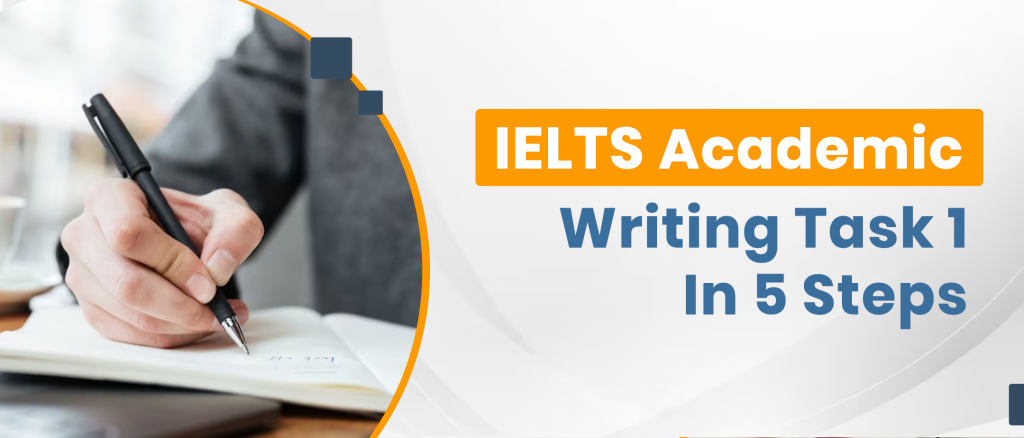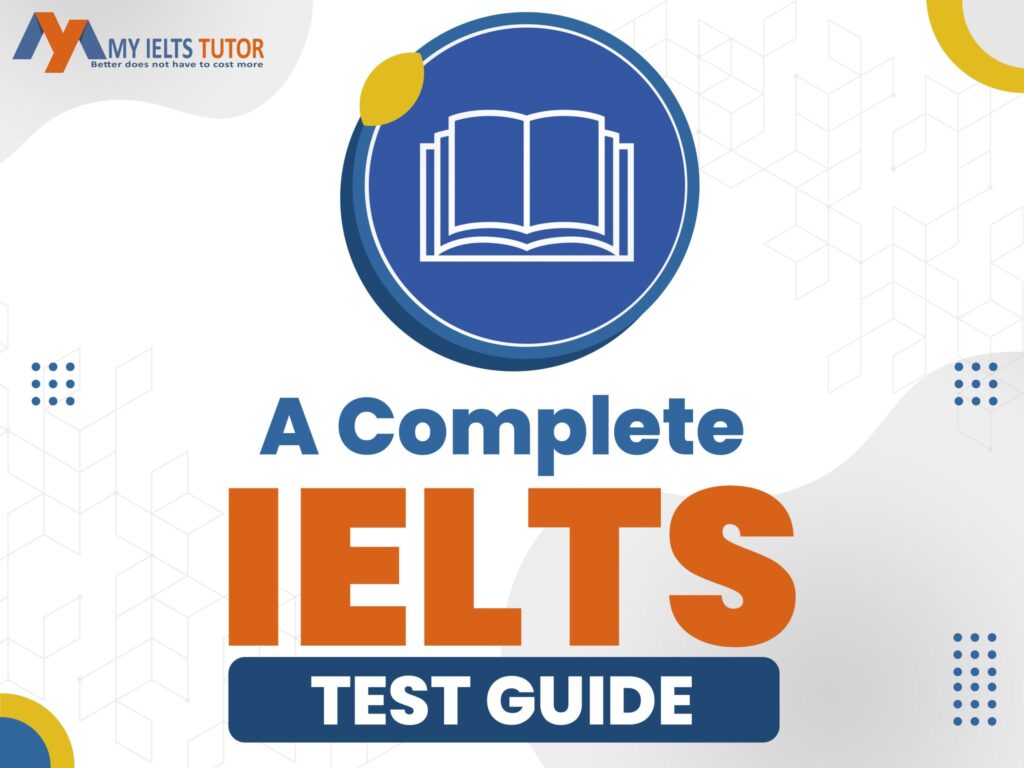IELTS Reading – True or False, Not Given Questions: Tips and Tricks to Solve.
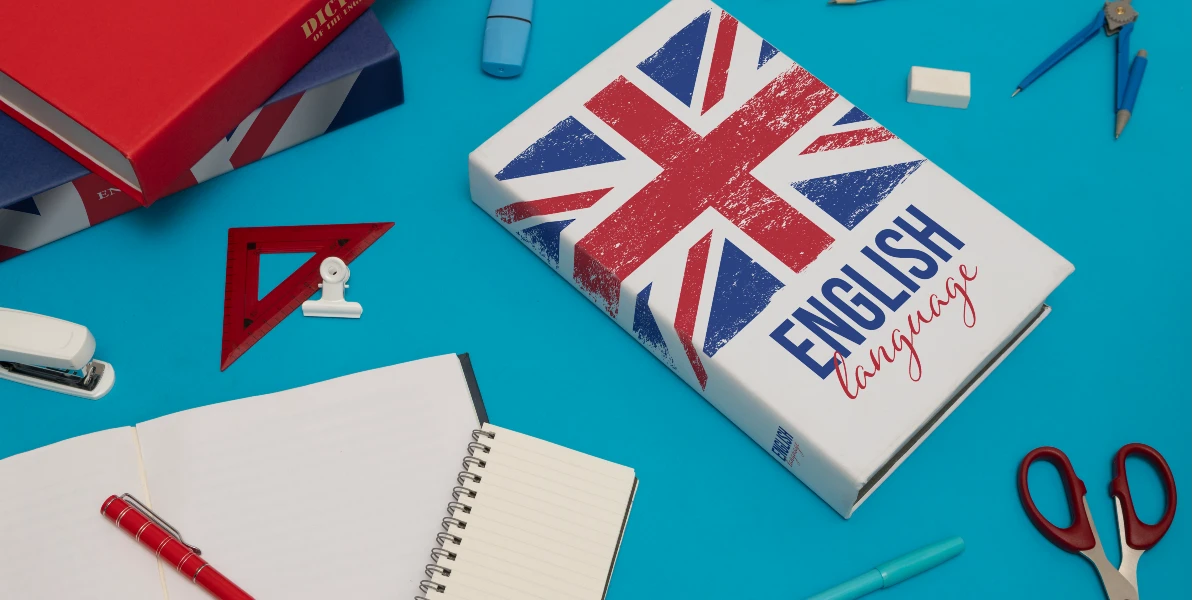
In the Reading module of the IELTS exam, a maximum number of aspirants face the issue of time management despite its given prerequisite of solving 40 questions in 60 minutes. All the questions are objective, yet reading the passage and understanding its real meaning is complex considering this module. A question type of IELTS Reading – True or False is so complicated for candidates to lose their
marks. Are you also facing difficulties in Readings True or False, Not Given? I will share essential tips and tricks to level up your score bands for this question type.
What is True, False, Not Given?
IELTS Reading – True or False, Not Given Questions
In this question type of IELTS Reading module, a passage is given in the form of a conversation or information on a particular topic. The candidates must read the course and answer in True, False, or Not Given. The response is correct if the answer matches the below criteria.
● True means the information or the statement in the question agrees with the information given in the passage.
● False means the information or the statement in the question does not agree and contradicts the information presented in the passage.
● Not Given means there is no mention of the statement or the information asked in the question.
Let’s understand how to solve the following IELTS Reading – True, False, Not Given Question;
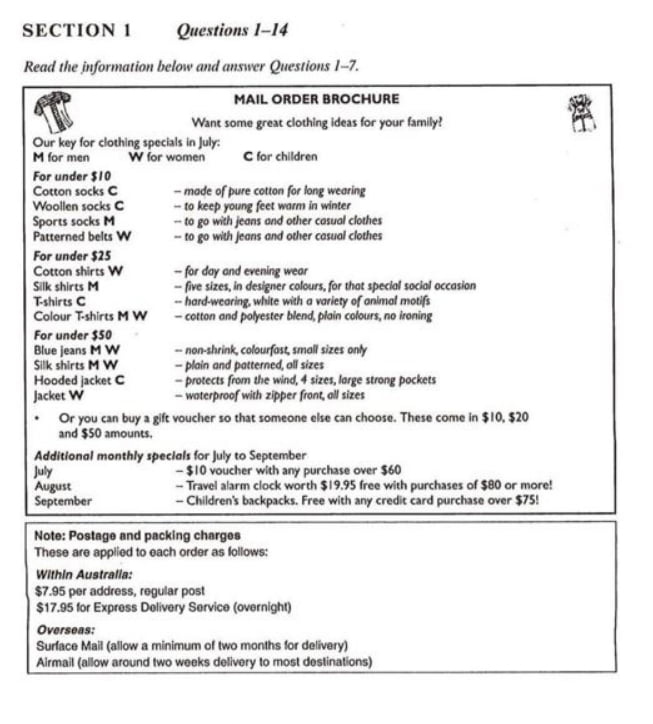
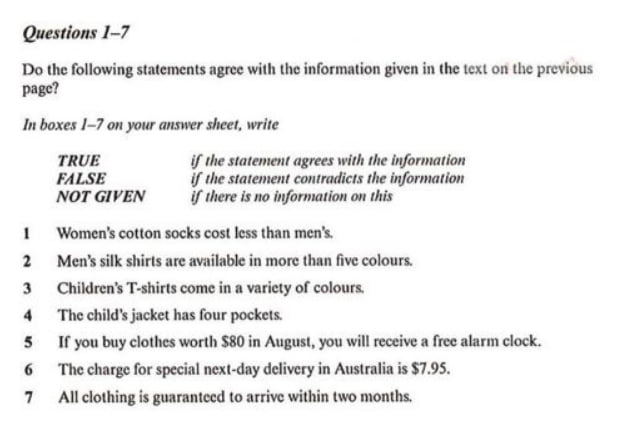
IELTS Reading: True, False, Not Given Tips and Tricks
The following are a few essential tips and tricks accompanying the sample question. Understand and know how to solve this topic and be a pro.
Tip 1: Read the Passage
Firstly, read the passage and understand the meaning of the information given. Consider the above topic MAIL ORDER BROCHURE, where clothing ideas are presented for Men, Women, and Children. Here the prices are mentioned for products ranging from socks, belts, shirts, t-shirts, jeans, and jackets for July. There is also a mention of the gift voucher, specials for July, August, and September, Postage and
packing charges within Australia and overseas. Candidates must keep in mind what information the passage delivers and where.
Tip 2: Understand the Questions
Let’s begin with the questions;
1) Women’s cotton socks cost less than men’s
Meaning: The cost of women’s cotton socks is less compared to men’s cotton socks.
Passage: There is mention of cotton socks for children, not for women or men. Men’s
sports socks are talked about but not cotton. Therefore, there is no information about
the cost comparison of cotton socks for men and women.
Answer: Not Given.
2) Men’s silk shirts are available in more than five colors.
Meaning: Silk Shirts for men are there in five colors and more.
Passage: Silk Shirts for men – five sizes, in designer colors, for that special social occasion.
In the reading, five represents sizes and not colors. However, there is mention of colors but in a variety and not a specific number. So, the information in the passage contradicts the question.
Answer: False.
3) Children’s T-shirts come in a variety of colors.
Meaning: There are color options in T-shirts for children’s.
Passage: T-shirts C – hard-wearing, white with a variety of animal motifs.
The color option available is only white. A common trap is there is a variety of animal motifs. So, the information in the passage contradicts the question.
Answer: False.
5) If you buy clothes worth $80 in August, you will receive a free alarm clock.
Meaning: An alarm clock is free for cloth bought worth $80 in August.
Passage: August – Travel alarm clock worth $19.95 free with purchases of $80 or more.
Here, the use of paraphrasing is done to trick the candidates. Use of buy instead of purchase, missing the words Travel, $80 or more in the question. However, the information agrees with the question.
Answer: True
Solve Questions 4, 6, and 7 yourselves.
Tip 3: Answers in Order
In the IELTS Reading module, all the sections have the questions with their response in order. For example, question 2 always precede the 3rd and succeed the 1st question. This trick helps save time while answering the last questions as their answers will never be in the upper part of the passage.
Tip 4: Have an eye on the next question
Why have an eye on the next question beforehand? While responding to the IELTS Reading True or False question types, the candidates must read the following question before because, as I mentioned, the answers are in order. You will have the solution to the question you respond to before the next
follows. This trick aids aspirants to react accurately and effectively without wasting time. Save time in any way you can to score high bands in IELTS Reading.
Tip 5: Answer Correctly
Now that you are aware of how to solve Readings True False questions with secret tips and tricks, understand to respond precisely. Do not get confused with the similar question type, YES or NO, meaning answering Yes instead of True will lose you marks. Many candidates, at times, also respond with the letter T rather than the whole word ‘True’ and later get disappointed; the essential advice is to answer rightly.
Check your answer sheet for mistakes to get your desired band scores for your IELTS scorecard whenever you get time during the exam period.




